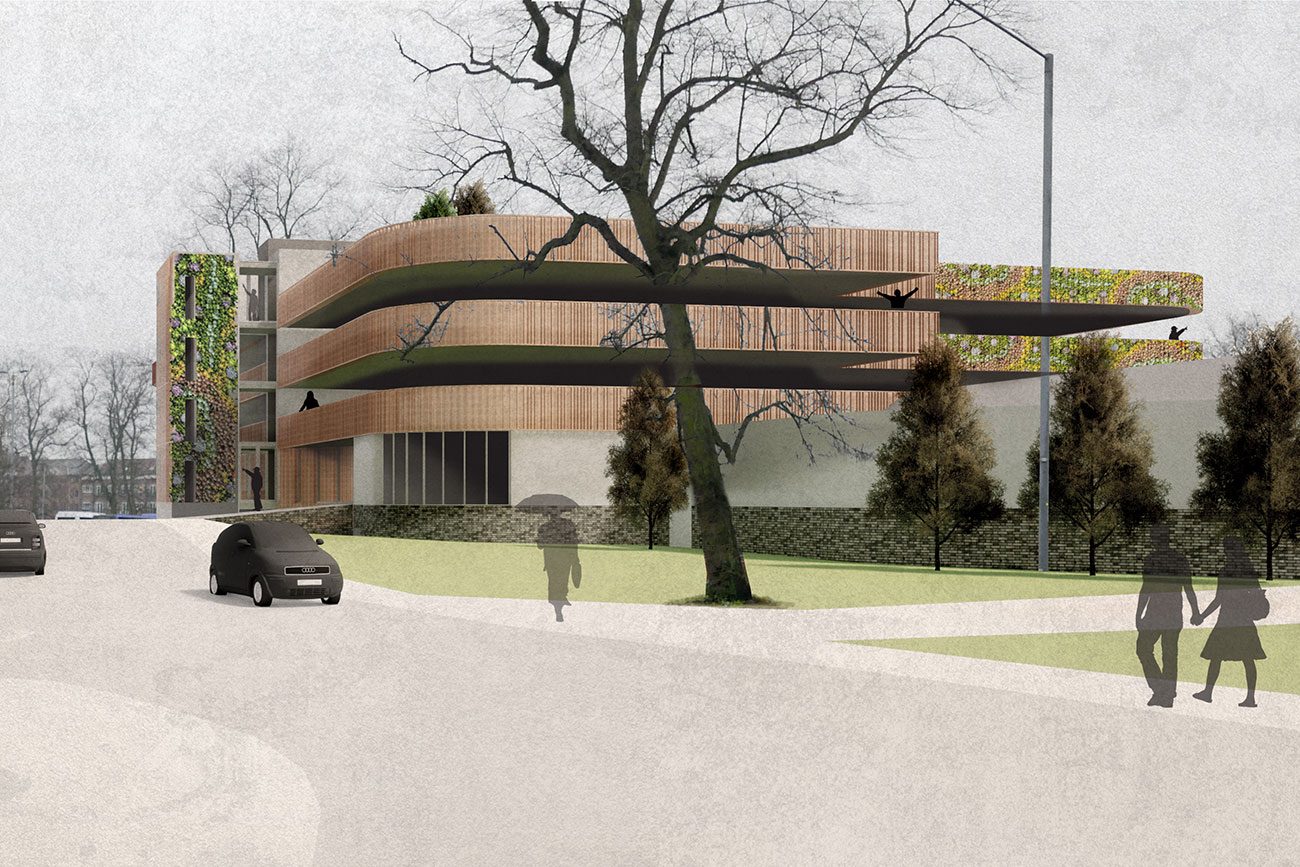York is set to spend millions of pounds on building three new multi-storey car parks – which will increase capacity by just 11 spaces.
That’s one of the startling findings of a new independent report into car parking in the city.
It has been produced to spark a debate on York’s car parking policy, just as the city council is about to commission its own analysis.
“If we don’t take the opportunity to look at this in an objective way, I think that we may end up with some terrible decisions,” said Johnny Hayes, one of the authors of the report.
“Personally, I think multi-storey car parks are from a bygone era, when the car was king. And we’re now moving into an era where the car has to find its place, and it’s no longer king.”
Today’s report:
- reveals an astonishing lack of data about parking in York
- questions why York needs three new multi-storey car parks – when the evidence shows that motorists prefer not to use them
- suggests that existing car parks could accommodate the spaces lost when the Castle closes.
It comes as City of York Council is set to commission a £40,000 strategic review into access and car parking in the city centre.
Today (Tuesday) executive member for transport Andy D’Agorne is set to approve the review.
However, this would only look at council car parks – and Johnny argues the analysis should also cover private parking, which is accountable for well over half the total spaces available.
Data ‘doesn’t support the plans’

Today’s independent report comes in the wake of plans for a 372-space multi-storey car park on St George’s Field getting approval.
This would replace the Castle car park, due to be closed under the Castle Gateway development proposals.
But it could still be stopped if the council’s parking review recommends a rethink.

The authors of today’s report – including Kate Ravilious, Jamie Wood as well as Johnny – say: “Parking is often a heated topic of debate for local residents, shop keepers and interested parties. Yet it is clear that data to inform this debate is lacking and assumptions rather than facts are often the order of the day.”
They have totalled up car parking spaces in the city centre, both now and projected. Currently they calculate there are 4,350 spaces.
However the revamp of York Station would see the current 1,068 spaces reduced to 636 at the new multi-storey proposed there.
And even with a third, 664-space multi-storey proposed for York Central, that takes the projected spaces to 4,361 – just 11 more than we have now.
Johnny pointed out that existing multi-storey car parks at Foss Bank and Piccadilly are rarely at capacity, and said motorists prefer surface level car parks. So, he asks, why build three more multi-storeys?
“We can’t be building these huge car parks, when the statistics perhaps don’t support the need for them.”
Evidence in the report suggests that the spaces lost at Castle car park already exist in Piccadilly, and the existing surface-level St George’s car park.
The authors want the council’s parking review to consider:
- the impact on carbon emissions in the light of York’s 2030 net zero target
- changing trends in public transport, walking and cycling post-Covid
- alternatives to building car parks.
Car parking facts

Here are some other eye-opening facts in their report.
York is ranked 39th out of 353 councils in an RAC report of the authorities making the most profit from parking, with £5.788m in 2018-19
Many of the electronic car counters at council car parks have not been functioning accurately for a considerable time. In particular, Castle car park has not been collecting data on the number of cars using it for almost three years
York has approximately 19,500 parking spaces across the city, with just over one fifth (4,350) of these near to the city centre. Of the 4,350 city centre parking spaces just over half (2,417) are operated by City of York Council
If St George’s Field multi storey wasn’t built, and the surface car park retained instead, then York’s city centre parking capacity would reduce by 85 spaces. This is 41 more spaces than the city has managed with since 2016 (whilst the Foss Barrier works have been ongoing) and 151 more spaces than were available during the summers of 2018 and 2019 (when the Rose Theatre was in place)
St George’s Field car park is closed due to flooding for an average of six days every year

The average annual income that City of York Council makes from city centre parking revenue (not including parking permits) is just over £5 million
The four largest city centre car parks bring in very different levels of income. Based on income figures for 2018-19, Castle car park provides 14% of the council’s city centre car parking but brought in 21% of the income in 2018-19. Piccadilly has 13% of the spaces and brings in 11% of the income. Foss Bank has 14% of the spaces, brings in just 7% of the income
Castle, Bootham Row, Piccadilly, St George’s and Union Terrace all earn a high average income per space and appear to be well used. By contrast Monk Bar, Esplanade, Foss Bank and Nunnery Lane earn a significantly lower rate per space and would appear to be poorly used
